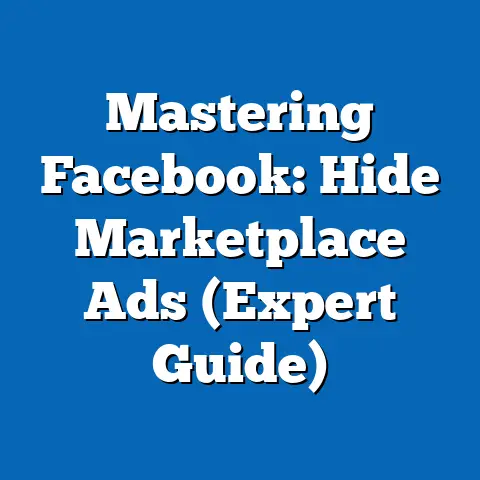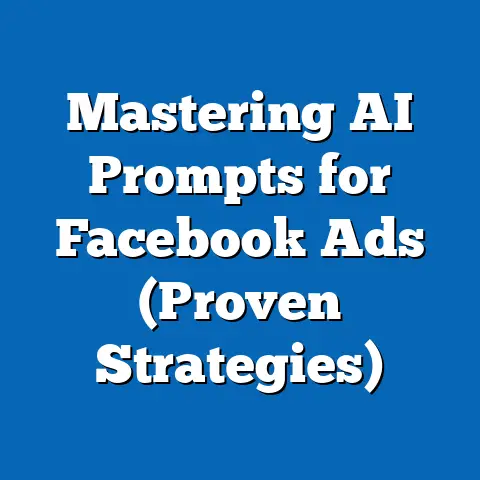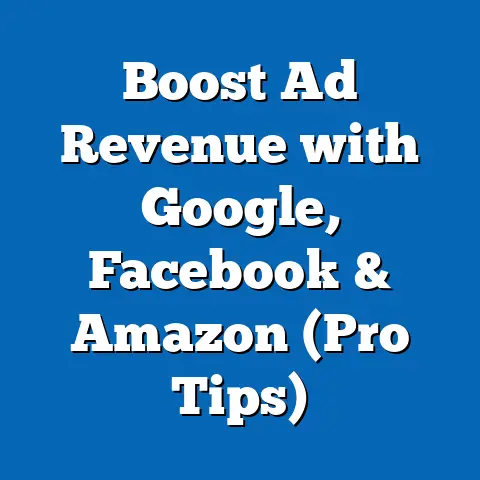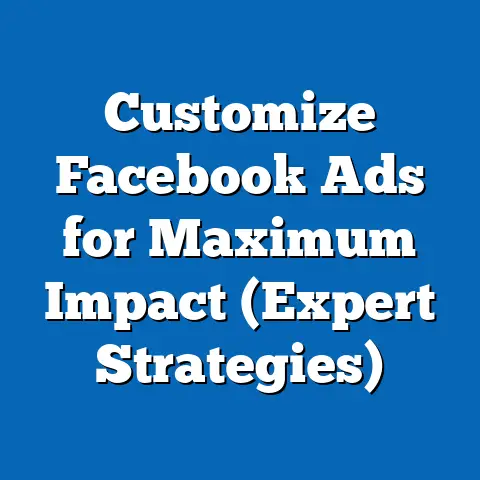Boost Sales with Facebook Ads Carding Strategies (Expert Tips)
Facebook Ads have become a cornerstone of digital marketing, offering businesses unparalleled reach and targeting capabilities to boost sales. As of 2023, Meta (Facebook’s parent company) reported that over 200 million businesses use its advertising tools, with ad revenue reaching $114.9 billion in 2022, a 6% increase from the prior year despite economic headwinds (Meta Investor Reports, 2023). However, alongside legitimate advertising strategies, illicit practices such as “carding”—the use of stolen credit card information to fund ad campaigns—have emerged as a shadowy undercurrent in the digital advertising ecosystem, posing ethical and legal risks.
This article delves into legitimate, expert-driven strategies for maximizing sales through Facebook Ads while addressing the alarming trend of carding as a cautionary tale. Key trends show that small- and medium-sized enterprises (SMEs) account for 70% of Facebook Ads users, with a significant demographic skew toward younger business owners aged 25-34 (Statista, 2023). Historical data reveals a dramatic rise in ad spend over the past decade, while future projections suggest continued growth in ad personalization and AI-driven targeting by 2030.
Section 1: Current Trends in Facebook Ads for Sales Growth
The Dominance of Facebook Ads in Digital Marketing
Facebook Ads remain a dominant force in digital marketing, with over 3 billion monthly active users on the platform as of Q2 2023 (Meta, 2023). Businesses leveraging these ads report an average return on ad spend (ROAS) of 3.5x, meaning for every $1 spent, they generate $3.50 in revenue (Hootsuite Digital Trends Report, 2023). This high ROI is driven by precise targeting options, including demographics, interests, and behaviors, which allow businesses to reach niche audiences effectively.
The platform’s ad formats—such as carousel ads, video ads, and lead generation ads—have evolved to cater to diverse business needs. Video ads, for instance, account for 45% of total ad impressions and are 20% more likely to drive conversions compared to static image ads (Social Media Examiner, 2023). This trend underscores the growing importance of dynamic content in capturing consumer attention.
Demographic Breakdown of Facebook Ads Users
Demographic data reveals distinct patterns in who uses Facebook Ads and how they perform. SMEs, which constitute 70% of advertisers, often operate in e-commerce, retail, and local services, with a significant concentration among entrepreneurs aged 25-34 (Statista, 2023). This age group represents 38% of advertisers, reflecting their tech-savviness and willingness to adopt digital tools early in their careers.
Geographically, North America leads in ad spend, accounting for 42% of global Facebook ad revenue, followed by Europe at 25% and Asia-Pacific at 22% (eMarketer, 2023). However, emerging markets in Asia and Africa are showing rapid growth, with ad spend in these regions increasing by 15% year-over-year due to rising internet penetration and mobile usage (Internet World Stats, 2023). Gender-wise, male business owners represent 58% of advertisers, though female-led businesses are growing, particularly in beauty and wellness sectors, with a 12% increase in ad spend from 2021 to 2023 (Meta for Business, 2023).
The Dark Side: Carding in Facebook Ads
While legitimate businesses thrive on Facebook Ads, the platform has also attracted illicit activities like carding. Carding involves using stolen credit card data to fund ad campaigns, often for fraudulent products or services, with the goal of quick profits before accounts are flagged. A 2022 report by cybersecurity firm Group-IB estimated that carding-related fraud in digital advertising costs businesses and platforms $6.5 billion annually, with Facebook Ads being a prime target due to its vast reach.
Carders often target high-ROI industries like e-commerce and cryptocurrency, using stolen funds to drive traffic to scam sites. This practice not only undermines trust in digital advertising but also results in financial losses for card issuers and platforms when chargebacks occur. Meta has responded by enhancing fraud detection algorithms, banning 1.3 billion fake accounts in 2022 alone, though the problem persists (Meta Transparency Report, 2023).
Section 2: Expert Strategies to Boost Sales with Facebook Ads
Strategy 1: Precision Targeting for Maximum Impact
One of the most effective ways to boost sales through Facebook Ads is by leveraging its advanced targeting capabilities. Businesses can segment audiences based on age, location, interests, and even purchase history, ensuring ads reach the most relevant consumers. For example, a 2023 case study by Shopify showed that e-commerce brands using custom audiences—lists of past customers uploaded to Facebook—saw a 40% higher conversion rate compared to broad targeting (Shopify Marketing Insights, 2023).
Lookalike audiences, which target users similar to existing customers, also yield impressive results, with a reported 25% increase in ROAS for businesses using this feature (Meta for Business, 2023). The key is to continuously refine targeting parameters based on performance data, ensuring ad spend is allocated to high-converting segments.
Strategy 2: Creative Optimization and A/B Testing
Creative elements play a critical role in ad performance. High-quality visuals, compelling copy, and clear calls-to-action (CTAs) can significantly boost engagement rates. According to WordStream (2023), ads with video content have a 48% higher click-through rate (CTR) than static ads, while ads with personalized messaging see a 32% uplift in conversions.
A/B testing—running multiple versions of an ad to compare performance—is a proven method to identify winning creatives. Businesses should test variables like headlines, images, and CTAs, with data showing that 60% of advertisers who regularly A/B test report improved campaign outcomes (HubSpot, 2023). This iterative approach ensures continuous optimization and maximizes sales potential.
Strategy 3: Retargeting to Re-Engage Lost Leads
Retargeting, or remarketing, involves showing ads to users who have previously interacted with a business but did not convert. This strategy is highly effective, as retargeted users are 70% more likely to complete a purchase compared to first-time visitors (Criteo, 2023). For instance, displaying ads for abandoned cart items can recover up to 15% of lost sales for e-commerce brands (Baymard Institute, 2023).
Implementing the Facebook Pixel—a tracking code on a website—enables businesses to monitor user behavior and create retargeting campaigns. Data indicates that retargeting campaigns achieve a 10x higher CTR than standard display ads, making them a cost-effective way to boost sales (AdRoll, 2023).
Strategy 4: Budget Allocation and Bid Optimization
Effective budget management is crucial for maximizing ad performance. Businesses should allocate budgets based on campaign objectives, with data suggesting that 60% of ad spend should go toward conversion-focused campaigns for direct sales impact (eMarketer, 2023). Additionally, using automated bidding strategies like Cost Per Acquisition (CPA) can optimize ad delivery to achieve the lowest cost per sale.
Seasonal trends also influence budget decisions. For example, ad costs typically rise by 25% during the holiday season due to increased competition, so businesses must plan accordingly (Social Media Today, 2023). Monitoring metrics like cost-per-click (CPC) and ROAS in real-time allows for agile adjustments to prevent overspending.
Section 3: Historical Trends in Facebook Ads
Evolution of Ad Spend and Performance (2013-2023)
Over the past decade, Facebook Ads have transformed from a nascent advertising tool to a global powerhouse. In 2013, Meta’s ad revenue was $6.9 billion, representing a fraction of today’s $114.9 billion (Meta Annual Reports, 2013-2022). This growth reflects both the platform’s expanding user base and the increasing sophistication of its ad tools, such as the introduction of custom audiences in 2014 and dynamic ads in 2015.
Historically, average CPC has fluctuated based on market dynamics. In 2015, the global average CPC was $0.27, rising to $0.97 by 2020 due to heightened competition and improved targeting (WordStream, 2015-2020). However, CPC stabilized at around $0.94 in 2023, reflecting Meta’s efforts to balance advertiser demand with cost efficiency (AdEspresso, 2023).
Shifts in Advertiser Demographics
The demographic profile of Facebook Ads users has also evolved. In 2013, large enterprises dominated ad spend, accounting for 60% of revenue, while SMEs contributed just 30% (eMarketer, 2013). By 2023, SMEs had flipped this ratio, representing 70% of advertisers, driven by accessible tools like Meta Business Suite and lower entry barriers for ad campaigns (Statista, 2023).
Age demographics have shifted as well, with younger entrepreneurs (25-34) overtaking older cohorts (45-54) as the largest advertiser group, a trend tied to digital nativity and the rise of e-commerce startups. This contrasts with 2013, when older business owners, often from traditional industries, held a larger share (Pew Research, 2013-2023).
Section 4: Statistical Comparisons Across Demographics
Performance by Business Size
Data reveals stark differences in ad performance based on business size. SMEs, despite lower budgets, achieve an average ROAS of 4.2x due to niche targeting and agility in campaign adjustments (Hootsuite, 2023). In contrast, large enterprises report a slightly lower ROAS of 3.1x, often due to broader, less personalized campaigns (eMarketer, 2023).
However, large businesses benefit from economies of scale, with average monthly ad spends of $50,000 compared to just $1,500 for SMEs. This allows them to dominate high-competition industries like finance and technology, where CPC can exceed $3.00 (WordStream, 2023).
Performance by Industry
Industry-specific data highlights varying success rates with Facebook Ads. E-commerce leads with a 5.3x ROAS, driven by direct-to-consumer models and retargeting strategies (Shopify, 2023). The beauty and wellness sector follows at 4.8x ROAS, benefiting from visual ad formats and influencer collaborations (Meta for Business, 2023).
Conversely, industries like B2B services report a lower ROAS of 2.1x, as their longer sales cycles and higher ticket prices make immediate conversions harder to achieve (HubSpot, 2023). Understanding these differences is critical for tailoring strategies to specific sectors.
Performance by Region
Regional disparities in ad performance are also notable. North American businesses achieve the highest ROAS at 4.5x, reflecting mature markets and high consumer spending power (eMarketer, 2023). Europe follows at 3.8x, while Asia-Pacific lags at 2.9x due to varying levels of digital infrastructure and competition from local platforms like WeChat (Statista, 2023).
Emerging markets, however, show higher growth potential. For instance, ad spend in Africa grew by 18% in 2022, compared to just 5% in North America, signaling untapped opportunities for businesses willing to navigate these regions’ unique challenges (Internet World Stats, 2023).
Section 5: The Risks of Carding and Ethical Alternatives
Understanding the Carding Problem
Carding remains a significant issue in the Facebook Ads ecosystem, with fraudsters exploiting stolen credit card data to run high-budget campaigns. Group-IB (2022) estimates that 10% of ad spend in certain high-risk industries like cryptocurrency may be tied to fraudulent activities. These campaigns often promote scams or low-quality products, damaging consumer trust and leading to chargebacks that cost legitimate businesses and platforms billions.
Meta’s response includes machine learning-based fraud detection and stricter verification for ad accounts. In 2022, the company removed 5.4 million ads linked to payment fraud, a 30% increase from 2021 (Meta Transparency Report, 2023). Despite these efforts, carding persists, often facilitated by dark web marketplaces where stolen card data is sold for as little as $10 per card (Cybersecurity Ventures, 2023).
Ethical Alternatives for Low-Budget Advertisers
For businesses tempted by illicit shortcuts due to budget constraints, ethical alternatives exist. Organic growth strategies, such as building engaged communities on Facebook Pages, can drive traffic without ad spend, with 65% of small businesses reporting success through organic posts (Sprout Social, 2023). Additionally, low-cost ad campaigns starting at $5 per day can yield measurable results when paired with precise targeting.
Partnerships and influencer marketing offer another avenue, with micro-influencers (10,000-50,000 followers) often charging less than $500 per post while delivering high engagement rates of 6-8% (Influencer Marketing Hub, 2023). These strategies provide sustainable growth without the legal and ethical risks of carding.
Section 6: Future Projections for Facebook Ads
Growth in AI and Personalization
Looking ahead, Facebook Ads are poised for significant advancements driven by artificial intelligence (AI) and machine learning. Meta’s 2023 roadmap includes enhanced AI tools for ad creation and optimization, with early tests showing a 20% reduction in CPC for businesses using automated creative suggestions (Meta Investor Call, 2023). By 2030, industry analysts predict that 80% of ad campaigns will rely on AI-driven personalization, tailoring content to individual user preferences in real-time (Forrester, 2023).
This shift will likely widen the gap between tech-savvy advertisers and those slow to adapt, with early adopters projected to see a 30% higher ROAS by 2025 (Gartner, 2023). Businesses must invest in learning these tools to remain competitive in an increasingly automated landscape.
Expansion in Emerging Markets
Emerging markets will play a larger role in Facebook Ads growth, with ad spend in Asia-Pacific and Africa projected to rise by 20% annually through 2028 (eMarketer, 2023). This growth is fueled by increasing smartphone adoption—projected to reach 85% penetration in these regions by 2030—and Meta’s focus on localized ad solutions (GSMA Mobile Economy, 2023).
However, challenges like regulatory scrutiny over data privacy and competition from regional platforms may temper growth. Businesses targeting these markets should prioritize mobile-first strategies, as 90% of users in emerging regions access Facebook via mobile devices (Statista, 2023).
Combating Fraud and Carding
The fight against carding and ad fraud will intensify, with Meta expected to invest $2 billion annually in cybersecurity by 2025 (Cybersecurity Ventures, 2023). Blockchain-based verification for ad payments and stricter KYC (Know Your Customer) protocols for advertisers are among the anticipated solutions. Industry experts project a 40% reduction in ad fraud losses by 2030 if these measures are widely adopted (Group-IB, 2023).
For businesses, staying compliant with platform policies and avoiding suspicious practices will be critical. The long-term implications of fraud prevention include a more trustworthy advertising ecosystem, potentially increasing consumer confidence and ad effectiveness.
Conclusion
Facebook Ads offer immense potential for boosting sales, with data-driven strategies like precision targeting, creative optimization, and retargeting delivering impressive returns. Current trends highlight the platform’s dominance, with $114.9 billion in ad revenue in 2022 and a user base of over 3 billion, while demographic insights reveal SMEs and younger entrepreneurs as key drivers of growth. Historical comparisons show a decade of rapid evolution in ad spend and tools, while future projections point to AI personalization and emerging market expansion as defining trends.
However, the shadow of carding looms large, with billions lost to fraud annually, underscoring the need for ethical practices and robust platform safeguards. By focusing on legitimate, expert-backed strategies, businesses can harness the power of Facebook Ads to achieve sustainable sales growth while navigating the challenges of a dynamic digital landscape. As the platform evolves, staying ahead of technological and market shifts will be essential for long-term success.






